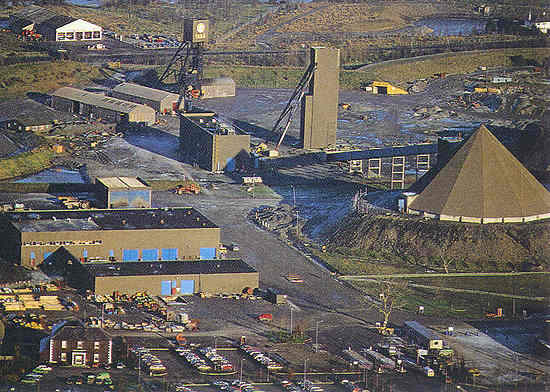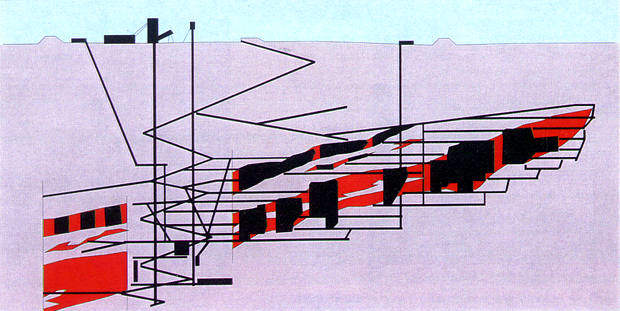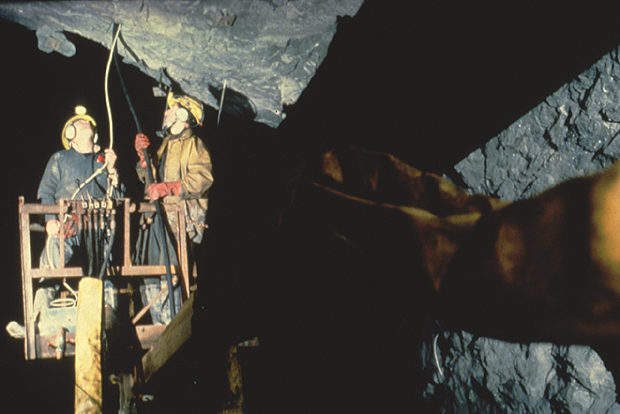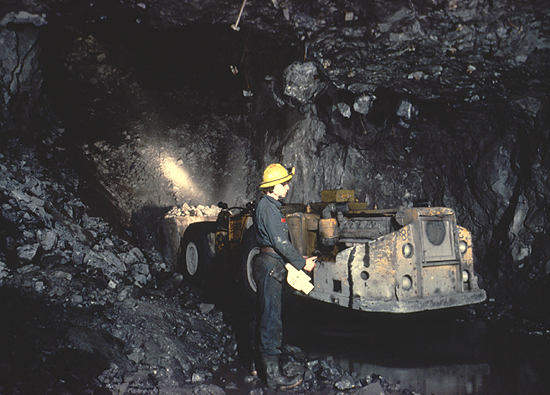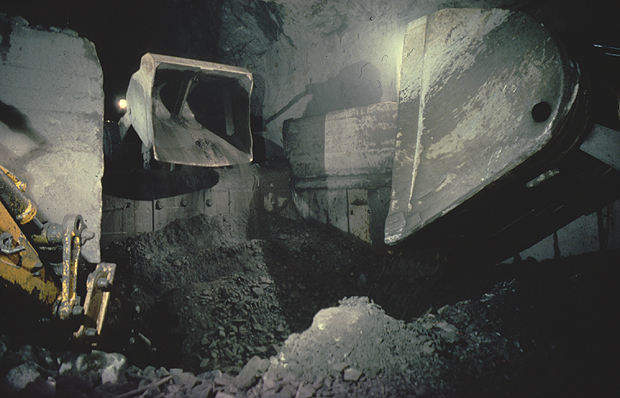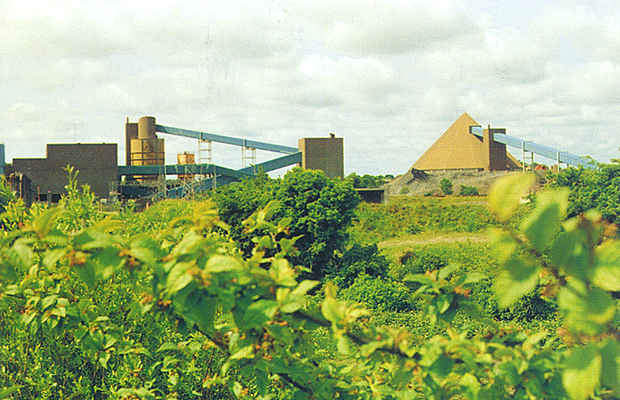The Tara lead and zinc mine is located at Navan, County Meath, approximately 50km northwest of Dublin. The mine opened in 1977, was acquired by Outokumpu in 1986 and in January 2004 was transferred to New Boliden as part of an asset exchange between the two Nordic companies. Placed on care-and-maintenance in 2001 on account of high production costs, Tara was restarted in 2003 and produced 2.55Mt of ore, the highest tonnage since 1995. It is the largest zinc mine in Europe, and ranks fifth in the world. Some of the output is delivered to Boliden’s Odda and Kokkola zinc refineries, both formerly owned by Outokumpu, and the remainder goes to European customers.
Geology and reserves
The Navan orebody consists of several strata-bound, southwest-dipping, faulted lenses hosted in Lower Carboniferous limestones. Ore horizons commonly display irregular assay outlines and vary from a few metres thick to several tens of metres.
As of January 2006, reserves were 3.4Mt at 9.2% zinc and 2.0% lead proven and 12.3Mt probable with 8.5% Zn and 1.8% Pb. Measured resources totalled 1.1Mt. grading 7.1% Zn and 2.8% Pb. In addition, the Nevinstown (Bula) orebody, northwest of Tara, contains 8Mt grading 10% Zn and 2% Pb, raising the overall resource to approximately 40Mt. Boliden expects further exploration to raise ore tonnage sufficiently to guarantee a mine life of ten years.
Underground mining
Tara uses underground trackless mining, supported by one production and one service shaft, and an access decline from surface. The use of specifically tailored, state-of-the-art, remote-control technology and computerised systems is maximised, and the mine has developed a crusher/conveyor network to simplify handling ore obtained from a progressively larger area underground.
Mining methods have varied in the past but, currently, variations of blast hole open stoping with drawpoints located in footwall ore are used and involve substantial use of remote-controlled Tamrock (now Sandvik) load-haul-dump (LHD) equipment. Pillar extraction is usually carried out using similar methods between cemented, hydraulically placed fill walls consisting of mill tailings. Tamrock 50D trucks are used for ore haulage underground with Normet utility vehicles, and New Boliden has also recently begun introducing some Atlas Copco equipment. Communications underground are provided by a Motorola mobile radio system.
Production is currently targeted from 60 stopes/pillars with a lateral development schedule of 15km/y. Approximately 1.3Mt/y of backfill are placed.
Over the last few years Tara has moved into areas of much lower average thickness (3–20m). If the ore is thick, blind upholes are used and the stope mined from the footwall drift, with inclined room-and-pillar and/or longitudinal longhole stoping used in thinner areas.
Ore processing
Four underground crushers are equipped with a hydraulic rockbreaker over a crusher pocket. One operator controls and monitors the operation of the crushers, together with the associated conveyors, the tramp metal magnet and conveyor transfer points.
On surface, run-of-mine ore is fed to the secondary and tertiary crushers, then ground by open-circuit rod milling followed by closed-circuit ball milling. The ground product passes to flotation circuits for lead recovery, followed by zinc. The flotation circuit includes 18 Outomec OK-38 and eleven OK-8 cells. Each concentrate is dewatered by thickening and subsequent vacuum filtration. The filter cakes are dried in oil-fired rotary drum dryers to reduce moisture content to levels suitable for shipment.
Since the ore at Tara is metallurgically simple, only one concentration process is needed and all process water can be recirculated. All water from the mine is pumped into settling ponds, and excess water is discharged after acidity has been neutralised with lime.
Production
In 2005 Tara mined 2.55Mt of ore grading 8.4% zinc and 1.6% lead, and recovered 358,563t of 54.6% zinc concentrate plus 44,528t of lead concentrate grading 57.6% Pb. The contained metal tonnages were 195,843t of zinc and 26,653t of lead.
Environment
Outokumpu instituted a Total Mine Management principle of integration at Tara and also commenced a research programme into ‘wasteless mining’. Boliden continues to minimise adverse impacts on the environment.

